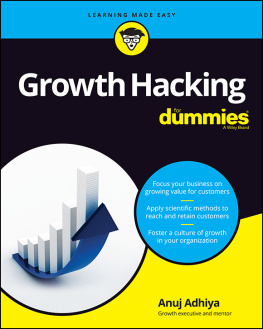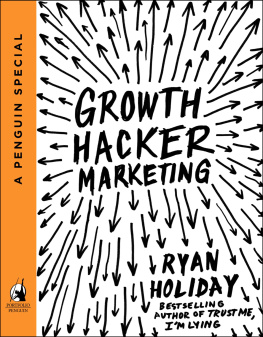Copyright and Trademarks
All rights reserved. No part of this book may be reproduced or transferred in any form or by any means without the written permission of the publisher and author. This publication is Copyright 2014 by BLEP Publishing. All products, publications, software and services mentioned in this publication are protected by trademarks
Disclaimer and Legal Notice
This product is not legal, accounting, medical or health advice and should not be interpreted in that manner. You need to do your own due-diligence to determine if the content of this product is right for you and your animals. While we have tried to verify the information in this publication, neither the author, publisher nor the affiliates assume any responsibility for errors, omissions or contrary interpretation of the subject matter herein.
We have no control over the nature, content and availability of the web sites, products or sources listed in this book. The inclusion of any web site links does not necessarily imply a recommendation or endorsement of the views expressed within them. We may receive payment if you order a product or service using a link contained within this book. BLEP Publishing or the author take no responsibility or will not be liable for the websites or content being unavailable or removed.
The advice and strategies, contained herein may not be suitable for every individual or animal / pet. The author and publisher shall not be liable for any loss incurred as a consequence of the use and or the application, directly or indirectly, of any information presented in this work. This publication is designed to provide information in regard to the subject matter covered.
Neither the author nor the publisher assume any responsibility for any errors or omissions, nor do they represent or warrant that the information, ideas, plans, actions, suggestions, and methods of operation contained herein is in all cases true, accurate, appropriate, or legal. It is the readers responsibility to consult with his or her own advisor before putting any of the enclosed information, ideas, or practices written in this book in to practice.
Foreword
Writing a book about growth hacking can be a little like the proverbial hopeless task of nailing Jell-O to the wall. At just the point that you think you have control of the thing, it shimmies out of your grasp.
The term growth hacking has only been around since 2010 and is credited to an article by Sean Ellis on the blog Startup Marketing (startup-marketing .com) entitled, Find a Growth Hacker for Your Startup.
Ellis begins the post by saying, Once startups are ready to scale, their biggest challenge is often hiring someone capable of leading the growth charge. A marketer with the right talents and approach can kick some serious ass once product-market fit and an efficient conversion / monetization process have been proven.
A few paragraphs later, he defines the term growth hacker in this way, A growth hacker is a person whose true north is growth. Everything they do is scrutinized by its potential impact on scalable growth. Is positioning important? Only if a case can be made that it is important for driving sustainable growth (FWIW [for what its worth], a case can generally be made).
Since Ellis post, many writers and industry pundits have run with the term growth hacker and made it as magically elusive and sometimes as questionably valid as the Reagan era voodoo economics. Heres how I see growth hacking ... and you dont need a cauldron and a spell book to make it work.
Growth hacking is marketing for the 21 st century.
Really? you say, Thats all youve got for me?
Go watch a few episodes of the television series Mad Men and come back and tell me if a 1960s era ad campaign would work today.
When I first began working online in the early 1990s doing web design, animated GIFs were all the rage. I think now about the pulsating rule bars and spinning globes that were the in thing and cringe. Its as bad as 1960s era fashion, clouds of cigarette smoke, and lava lamps.
Okay, lava lamps are still cool, but I digress.
In the first chapter of this book, I try to introduce you to the figure of a growth hacker and invite you into his mindset. As you read through the text, including the profiles of 40 companies that have successfully used growth hacking techniques, youll come to understand the importance of that one fundamental quality a growth mindset .
The growth hackers at the companies I discuss expected their efforts to grow from day one, they wanted that growth, and they focused all their efforts on achieving growth.
- Elliot Schmukler at LinkedIn analyzed the channels that brought users to the site and brilliantly linked the actions of actives to inactives to grow membership.
- Ride-for-hire company Uber cultivated a local market roll out plan and refined and repeated it one market at a time.
- Etsy exploited an overlooked group of sellers that eBay was pushing out and catered specifically to their needs.
- Pinterest built interest and desire with an invitation-only beta and seeded the site with professional content from designers who immediately grasped the concept of building online inspiration boards.
- Yelp leveraged the desire for first-person recommendations with perceived authority, all built on the founders need for a doctor when he came down with a flu.
- Square founder Jim McKelvey lost a $2,000 sale on a piece of art glass at a fair because he couldnt accept a credit card, so he founded a company that brought mobile payment technology to cell phones and tablets regardless of location.
These examples are only samples of the strategies employed by some of the most successful growth hackers of our time who understand that the first principle of growth hacking is that markets change and successful marketers change with them.
In fact, everything about web access and use has changed and is continuing to do so around us, thanks to the rise of the smartphone and the connected tablet. Mobile devices are generating more and more web consumption, including watching streaming video content. Growing your business in this climate demands meeting the needs of the mobile user.
The more the cellphone providers can pump out in terms of affordable mobile bandwidth and the more free wifi spots become available in municipalities, the more that trend wont just grow, but explode exponentially.
The days of sitting down in front of a desktop computer to do something online are rapidly passing into the dim recesses of memory. People want to be able to buy things from their phones, hail a ride, meet people, video conference be connected .
Old marketing concepts dont work in a world that is online to that extent. I used to have a running argument with a friend who insisted to me that the Internet is not a place. I still beg to differ that it is indeed a place, and the portals of entry are now no farther away than our mobile devices.
If your particular branded portal, be it an app or a website , that leads to your product or service is not optimized for the mobile user experience, youre in trouble. All the beautiful SEO in the world wont save you.
Growth hacking isnt about running an ad campaign, its about living a constant philosophy of growth never resting on your laurels, being prepared to change your course with the needs of the marketplace. In short, growth hacking is as dynamic as the Internet itself.
And theres no ONE way to do it. Thats where the nailing Jell-O part comes in. A lot of people are saying they can teach growth hacking , but I think the age old model of the master and the apprentice is much more applicable.






